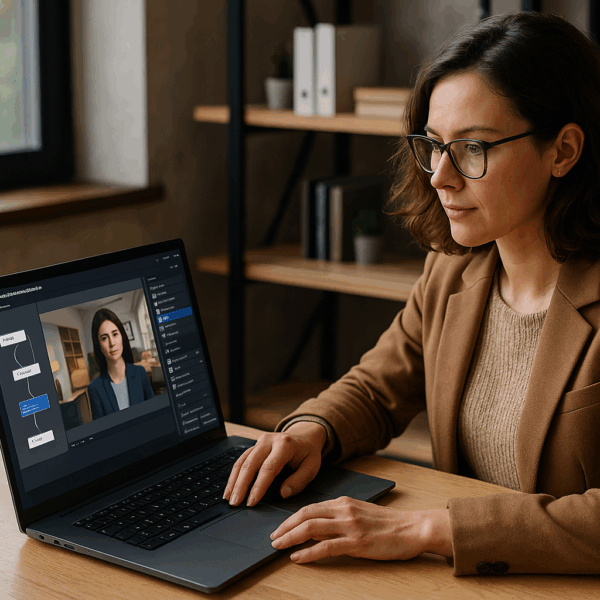You’ve designed a great classroom training program, but now it’s gathering dust in a drawer or can’t be delivered at scale anymore?
It’s time to give it a second life… in a digital format.
To Transform Your Classroom Training into Digital Learning, an in-person training into digital isn’t just about copy-pasting slides into an e-learning module. It’s about reimagining the entire learning experience by leveraging the strengths of digital: interactivity, learner autonomy, storytelling, and immersion.
So, how can you successfully shift from classroom to digital without losing the core educational value?
Here’s a step-by-step guide.
Start with the learning objectives (not the slides!)
The first instinct when you transform your Classroom training into Digital Learning is often to open the existing PowerPoint.
Bad move.
The real question is: what should the learner know or be able to do by the end?
Reframe your objectives as concrete skills. This will then help identify the right digital formats (quizzes, simulations, videos, etc.).
Action point: list the objectives by level (knowledge, understanding, application…).
Break the content down into standalone modules
In digital learning, two-hour sessions are a thing of the past.
Your content needs to be broken down into micro-modules, with 1 skill = 1 learning capsule.
The benefit? It makes navigation, retention, and adaptability easier (mobile learning, LMS, blended learning…).
Example: instead of a single module on “customer reception skills”, create 3 short ones:
- Greeting visitors in person
- Handling difficult situations
- Directing them to the right contact
Use storytelling to drive engagement
What works in a classroom (spoken facilitation, anecdotes, live questions) doesn’t automatically work in e-learning.
You need to recreate engagement by:
- Putting the learner in real-life scenarios (job-based situations)
- Letting them make choices, take action, and even make mistakes
- Leveraging emotion and narrative tension
With VTS Editor, you can build interactive modules where learners interact with a frustrated customer, choose their responses, and receive instant feedback.
PowerPoint or PDF are not e-learning formats.
To create a real digital learning experience, you need an authoring tool.
What you need:
- An intuitive interface
- The ability to create non-linear learning paths
- Tools for gamification, feedback, and realistic scenarios
VTS Editor allows you to design immersive modules without coding, with environments, characters, scoring, badges, and even conditional dialogues.
Test, adjust, iterate
A digital training program is never set in stone.
Test it with a small group of learners, gather their feedback, track the data (engagement and success rates, etc.), and make adjustments.
With VTS Perform, you can monitor your modules’ performance and identify friction points to continuously improve them.










